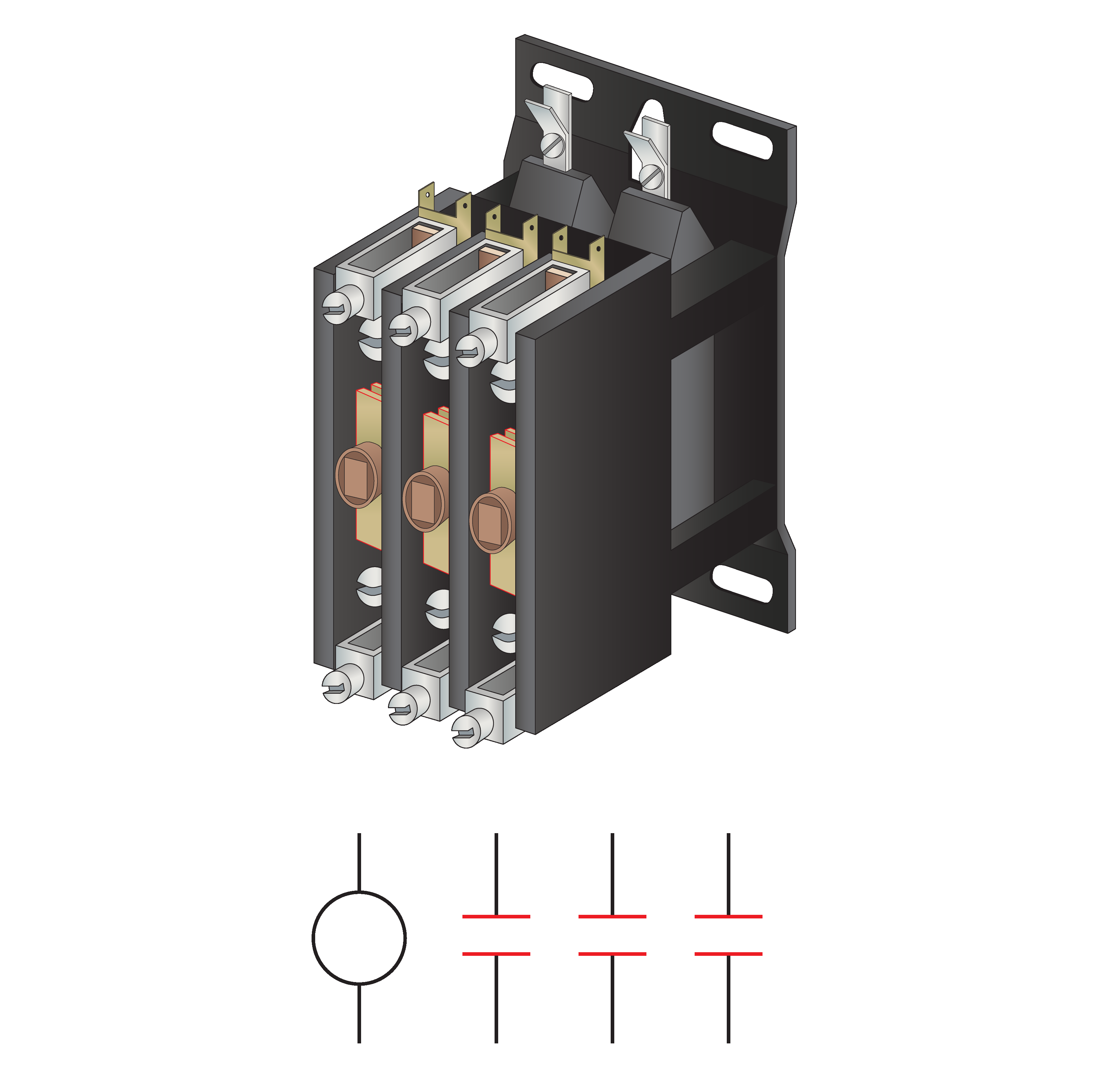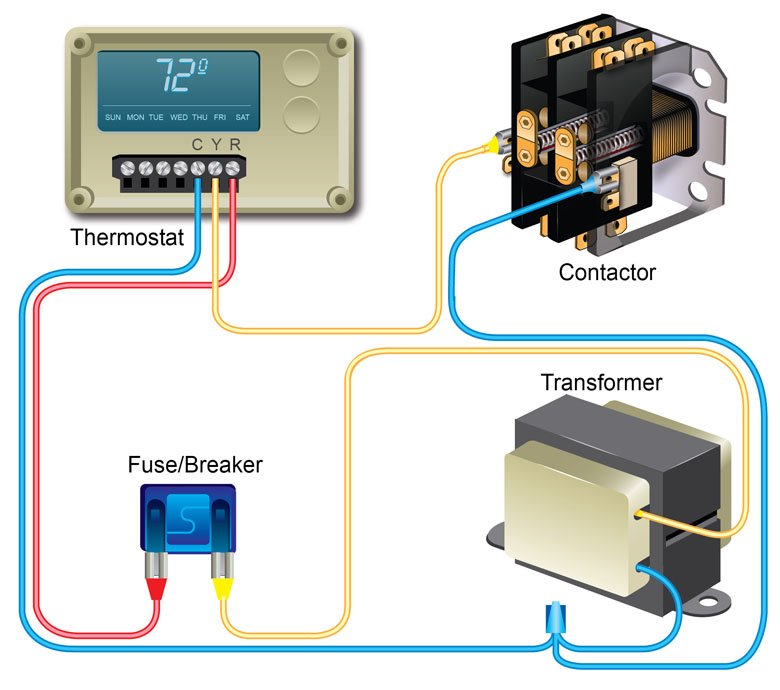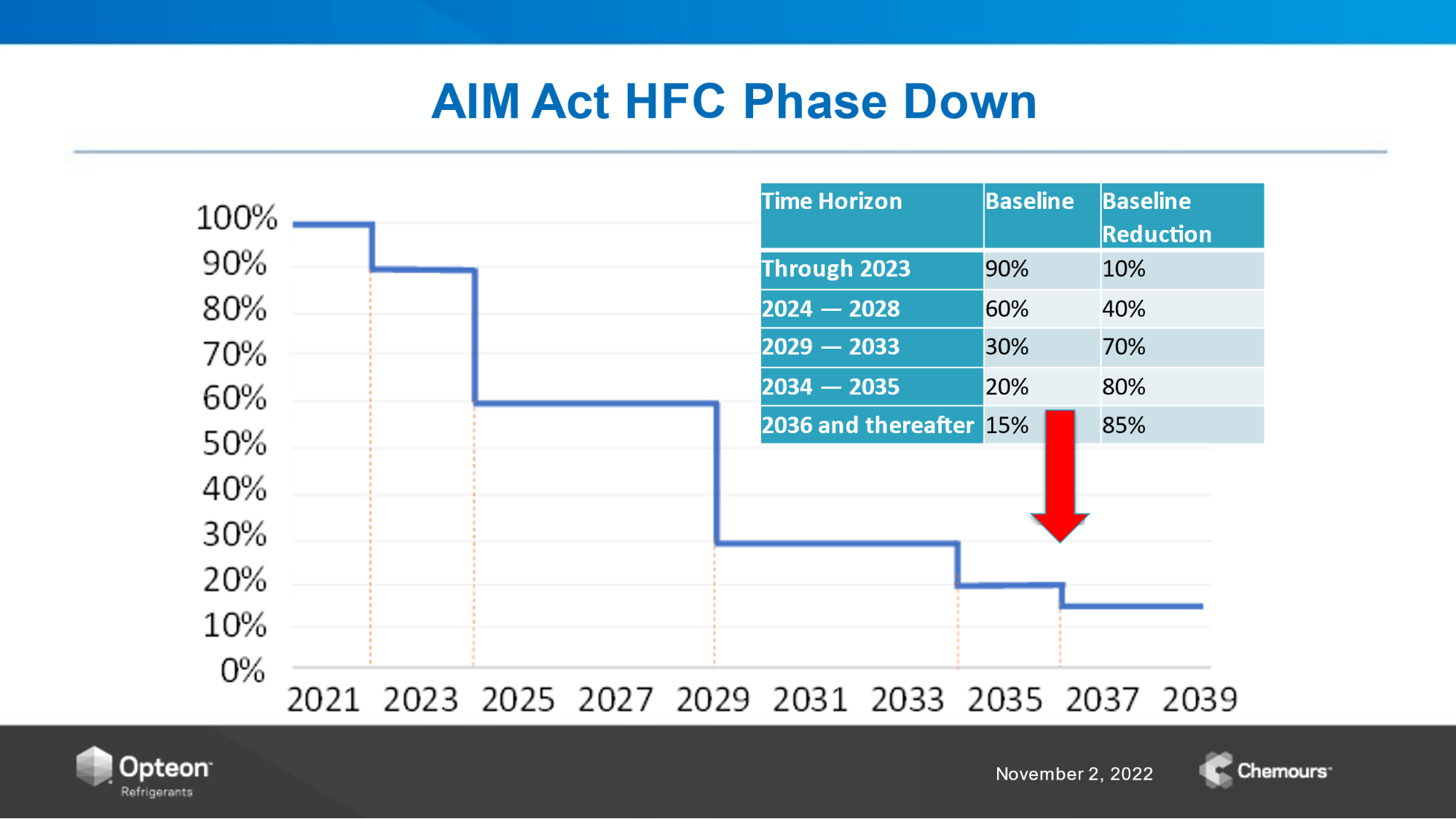Get Tech Tips
Subscribe to free tech tips.
What are Dry and Wet Contacts?

I was talking about dry contacts with one of my techs, and he looked at me like I had three heads—and one of them was on fire. So, I figured it would be good to cover the difference between wet and dry contacts in a tech tip.
Basically, “dry” contacts are switches with no shared power source or supply integral to the control. A common example would be the contacts in a compressor contactor. The contactor has a 24v coil (in residential), but the power supply through the contacts doesn't have any connection to the coil.

We see wet contacts every day when we connect a residential thermostat. A thermostat uses the same voltage/power source to power the control that it passes to the contacts from the “R” terminal. You can see the relationship between a set of wet contacts at the thermostat and dry contacts at the contactor coil below. Thermostat wiring can be a tricky subject, so you can learn more about it from our 3D video about low-voltage circuit wiring.

It's especially important to differentiate between wet and dry contacts when working on commercial equipment that may have different and varied controls. The Danfoss ERC 213 shown above is an example where the compressor (terminals 1 & 2) may be of a different voltage than the wet contacts on 5 & 6, which must be 120V.
Here is a video where I describe this in more detail:
You can also learn more about contactors specifically in commercial applications HERE.
—Bryan











Comments
To leave a comment, you need to log in.
Log In